Sydney Yovic, Breakthrough T1D Chief Strategy Officer and Chief of Staff, dedicated the last 12 years to powering progress and advancing Breakthrough T1D’s mission. Having started as a project manager in the Research department, Sydney has led with inspiring passion and perseverance. Her legacy of meaningful and impactful contributions can be felt around the world.

Thankfully for Breakthrough T1D and the global T1D community, Sydney will continue driving us toward cures as the Chief Executive Officer of JDRF Australia, beginning in August. Before returning to her roots “down under,” Sydney shares what fuels her passion for our mission, the breakthroughs she’s most proud of, and what she looks forward to in her new role. We wish Sydney much success and we look forward to her continued leadership as Breakthrough T1D leads the way to more effective solutions and cures for the global T1D community.
What drives your passion for Breakthrough T1D’s mission?
I’m driven by my love for my Uncle Jimmy, who was diagnosed with type 1 diabetes when he was 30. He was a very important part of my young life, but he died from T1D complications at age 35. Losing him was devastating for my whole family. In the last 12 years, my passion has grown because of the thousands of amazing families I have grown to know and love who are impacted by T1D.
What stands out when you think about your career path from a Research project manager to Chief Strategy Officer and Chief of Staff?
I have had the incredible experience of working on many high impact projects over the years with inspiring colleagues and leaders. Thinking back, a few that stand out include:
- In my first role at Breakthrough T1D (then JDRF), I optimized the Research department operating system and data infrastructure, which enabled the department to be nimbler in how we deploy dollars, analyze our portfolio and allowed us to be transparent to our community about where their dollars are going.
- Implementing Breakthrough T1D’s clinical trials connection tool is one of the accomplishments I’m most proud of. Clinical trial participation is one of the single most important things our community can do to accelerate advancements for T1D therapies, including cures. The opportunity to provide our community with a tool that makes participation easier was a true honor.
- Working in the Mission department with Aaron Kowalski, Ph.D., Chief Executive Officer, gave me a chance to step out of the research world and learn more about the diabetes ecosystem. In that role, we formalized partnerships with our peer organizations, including Beyond Type 1, Association of Diabetes Care & Education Specialists (ADCES), Taking Control of Your Diabetes (TCOYD), and The Diabetes Link. I truly believe we’re stronger together.
- Leading our Global Access Team, launching the T1D Index, and partnering with the Helmsley Charitable Trust on enabling access to basic T1D care for the poorest people on the planet was a career highlight and truly life changing. To have a glimpse at the burden of T1D globally was eye opening, and to be able to have just a small part in supporting this work was memorable and meaningful.
- Breakthrough T1D’s most critical asset is our people. As Chief of Staff, the opportunity to support our CEO and Executive Team in leading this great organization has been a privilege.
- Partnering with Aaron Kowalski on developing our future strategic focus was enlightening and unbelievably inspiring. Our role is clear and if we can rally our organization and community around this focus, I truly believe we will accelerate cures for T1D. To have a hand in leading that work was an honor.
What about your Breakthrough T1D experience was most rewarding?
I am passionate about our mission, I have always been intellectually curious, and intrinsically motivated by the need for constant improvement, so I have cherished every opportunity I’ve had to contribute to Breakthrough T1D moving faster toward cures. Traveling to Africa to see how our support is saving lives for the least fortunate people with T1D on the planet was one of my most rewarding experiences. And the people—from the staff who dedicate themselves day in and day out to advancing our mission, to our incredible Board of Directors, to the army of volunteers who will stop at nothing to support us, and our partner organizations and companies who work alongside us to cure T1D. I have had the good fortune of working alongside people who inspire me and have made me better over the years.
What does the future of Breakthrough T1D look like to you?
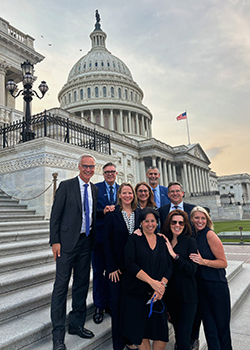
The future of Breakthrough T1D has never looked brighter. The science is promising, companies are committing billions of dollars on cures for T1D, and Breakthrough T1D is more focused than ever on putting the puzzle pieces together to advance our mission and cure this disease.
What are you most looking forward to in your new role as CEO of JDRF Australia?
I am most looking forward to working with the incredible team down in Australia to drive our collective mission forward. JDRF Australia has been a shining example of accelerating breakthroughs and impact for our community, led by the brilliant Mike Wilson. I look forward to building on the great organization JDRF Australia is today, and using my experience, relationships, and talents to create a velocity of impact for the T1D community both in Australia and around the globe.
JDRF Australia will become Breakthrough T1D Australia later this year.
L-R: Matt Varey, Martin Thibodeau, Royal Bank of Canada Regional President, British Columbia, and Dave Prowten, former Breakthrough T1D Canada President and CEO
Matt Varey, the newly elected Vice Chair of the Breakthrough T1D International Board of Directors (IBOD), brings a global voice as the first Canadian and the first person outside of the U.S. to serve in the role.
Matt, a senior executive at the Royal Bank of Canada (RBC), began volunteering with Breakthrough T1D Canada in 2001. Since then, he has served on Breakthrough T1D’s International Board of Directors and as Chair of the Board of Breakthrough T1D Canada.
He resides with his wife, Dr. Andrea Jack, in Oakville, Ontario, Canada.
Breakthrough T1D sat down with Matt to learn more about his volunteer journey and unique global perspective.
What led you to start volunteering for Breakthrough T1D?
In 2001, I returned to Canada from professional commitments abroad and witnessed colleagues and personal friends whose lives were affected by type 1 diabetes (T1D). I couldn’t just stand by and watch; I had to do anything I could to support them—not just on a personal level but also in a broader capacity. At that time, RBC started a coast-to-coast initiative with Breakthrough T1D Canada, and I recognized I had new ways to make a difference. That started this purposeful journey I have been on with Breakthrough T1D.
What are some of the roles have you had within the organization?
My first involvement with Breakthrough T1D was as a rider in the 2001 Breakthrough T1D Toronto Ride for a Cure. That led to my joining the Toronto Ride cabinet with other business leaders and, later, my becoming Chair of the Breakthrough T1D Ride.
In 2008, I was appointed a Board Member of Breakthrough T1D Canada. From 2014 to 2016, I served as the Chair of Breakthrough T1D Canada. To this date, I remain on the Board of Breakthrough T1D Canada, having taken on different mandates, including Chair of the Audit and Risk Committee and Chair of the Investment Committee.
Since 2016, I have been a Board member of Breakthrough T1D International, serving in various capacities, including member of the Breakthrough T1D International Finance Committee and Chair of the Breakthrough T1D International Audit and Risk Committee.
Do any of your experiences at Breakthrough T1D Canada stand out?
Every moment supporting this meaningful mission is special, and one of the highlights was my role as Chair of Breakthrough T1D Canada from 2014 to 2016. I was directly involved in the purposeful journey of making a difference for over 350,000 Canadians living with T1D, stewarding this cause for Breakthrough T1D Canada as a Canadian. In 2017, in conjunction with the CHIR (Canadian Health Institute Research) and our incredible team under the leadership of former President and CEO of Breakthrough T1D Canada Dave Prowten, we secured a 30-million grant from the Government of Canada to support Breakthrough T1D research and scholastic advancements in Canada.
Do you feel you will offer a unique perspective to IBOD as a person who lives in Canada?
Breakthrough T1D is a global organization on a journey of purpose. I’m excited and grateful to extend the reach of that journey. Canada is world-renowned for diabetes research and breakthroughs—the first genetically engineered human insulin was discovered and manufactured in Canada, after all! It is the responsibility of all Canadians to carry that flame of innovation and discovery, so I feel even more of an obligation as a Canadian on the Breakthrough T1D IBOD to carry that baton forward.
Why are volunteers so essential to our mission?
Grassroots volunteering is empowering and essential to the success of all nonprofit organizations. Breakthrough T1D volunteers keep us close to the cause and the people impacted by the disease—their care, passion, and dedication will help spread our purpose across the globe.
What does the future of T1D look like to you?
We have seen so much progress in recent years, and it will continue at an even faster pace. Cell therapies are an exciting focus area for Breakthrough T1D. I’m eager to see where that research takes us, particularly eliminating the need for immunosuppressant drugs.
Clinical trials show the possibilities for disease-modifying therapies to preserve beta cell function in people newly diagnosed with T1D. Today, we can delay the onset of T1D, and I’m confident tomorrow, we’ll be able to stop it! Scientists are finding ways to make insulin work smarter and work in conjunction with other drugs for better and safer disease management. There are so many ways Breakthrough T1D is improving the lives of people with T1D—treatments and therapies will continue to advance until we reach our ultimate goal: cures.
What does the future of Breakthrough T1D look like to you?
We are purposefully seeking opportunities for Breakthrough T1D to achieve more breakthrough research and facilitate diabetes education and knowledge globally. As an organization with a global reach, it is our responsibility to enable more access to research, education, and awareness in every corner of the world to help everyone understand the disease, navigate it, and support those impacted by it.
L-R: Neil, Perry, Sydney, Harris, and Lisa Wallack
Lisa F. Wallack is the newly elected Chair of the Breakthrough T1D International Board of Directors (IBOD). Her appointment holds distinction: she is the first Chair to have a parent previously serve in the role.
Lisa’s involvement with Breakthrough T1D started in the early 1970s after her younger brother, Scott, was diagnosed with type 1 diabetes (T1D) in 1969 at the age of 18 months. Lisa’s parents, Marilyn and Gerald Fishbone, were among the founders of Breakthrough T1D (then known as “JDF”) in the early 1970s, and her late father served as IBOD Chair from 1983 to 1986. Her passion for T1D advocacy was amplified when her son, Harris, was diagnosed in 2001 at the age of 5.
Lisa is a force at Breakthrough T1D, having served in nearly every volunteer leadership role locally, nationally, and internationally. She was President of the Greater New England Chapter and has been a member of Breakthrough T1D’s IBOD for nine years, helping with governance, strategy, and fundraising. Her leadership efforts were recognized in 2019 with the Jim Tyree Chairman’s Award, and Lisa and her husband, Neil, are being honored at the Breakthrough T1D Greater New England Chapter 2024 Gala for their unwavering dedication to the T1D community.
Breakthrough T1D sat down with Lisa to discuss carrying on her family’s legacy of volunteerism and her hopes for the organization’s future.
Your appointment as the new Breakthrough T1D IBOD Chair must feel like a full-circle moment since your father served in the role more than 30 years ago. How did your parents inspire you to be a leader, and what do you hope to carry on from them?
I grew up watching my parents devote countless hours to building this organization to engage other people impacted by T1D, build a community to support one another, and inspire and enable them to work together to raise awareness and funds to invest in type 1 diabetes cures.
My mom, who founded Breakthrough T1D’s New Haven Chapter and remains an active champion today, has modeled for me how to be an authentic and successful fundraiser driven by our passion to cure our loved ones and the millions of others whose lives have been impacted by T1D.
People say my father always made everyone feel like the most important person in the room. He has inspired me to be a strong but humble leader, to listen to others, and to work to bring out the best in them.
You have extensive experience working with many non-profit boards. What unique perspectives do you hope to bring to the IBOD as a female leader?
Women bring to the table a willingness to listen and collaborate without letting their egos drive the agenda. I want to engage the diverse perspectives of our T1D community and work together to leverage our experiences, insights, and networks to grow Breakthrough T1D’s reach and impact.
What opportunities lie ahead for Breakthrough T1D and the T1D community?
I see Breakthrough T1D being more reflective of the diverse community of those impacted with T1D, engaging people of all ages and stages of life with T1D from different communities around the U.S. and worldwide.
Ninety percent of those living with T1D are adults. We need to show the adult T1D community that we are relevant to them, to demonstrate the role that Breakthrough T1D has played in improving their lives, and to engage them in our quest to conquer the disease for good. We also need to look beyond the United States to strategically engage donors and governments to invest resources in Breakthrough T1D and our mission to accelerate our progress.
You have served in nearly every volunteer role possible at Breakthrough T1D. Do any roles stand out to you?

Lisa and her husband Neil, who together have raised over $1.4 million for T1D research
I really enjoy the work I have done at our local Breakthrough T1D chapter, reaching out to newly diagnosed families and introducing them to the Breakthrough T1D community and the progress that we are making.
I’m a passionate fundraiser, asking everyone we know to support Breakthrough T1D each year. My husband Neil’s participation in marathons, Breakthrough T1D Rides, and Ironman competitions inspired many others to support our cause. To date, we have raised over $1.4 million from our efforts!
I enjoyed my many roles on the Breakthrough T1D IBOD, from ensuring our governance structure is as effective and efficient as possible to working with our extraordinary professional leadership team to develop and implement the most impactful strategy to accelerate our mission.
How do you hope to inspire the Breakthrough T1D volunteer community in your new role?
Volunteers are the key to Breakthrough T1D’s success. We are the army that raises the funds needed to achieve our mission goals. We are a community that supports one another, sharing learnings and experiences to help others cope and engage them in our shared fight.
Learning from my parents, I have always valued volunteerism as a way to have an impact and to find fulfillment. Leaning in as a volunteer at Breakthrough T1D has given me a sense of empowerment and the strength, resilience, and hope to know that together we can conquer T1D. Being part of this amazing community and this impactful organization is deeply meaningful and inspiring.
Being involved with Breakthrough T1D for nearly 50 years gives you a unique perspective. How does living with T1D differ from the past to the present? What do you think it will look like in the future?
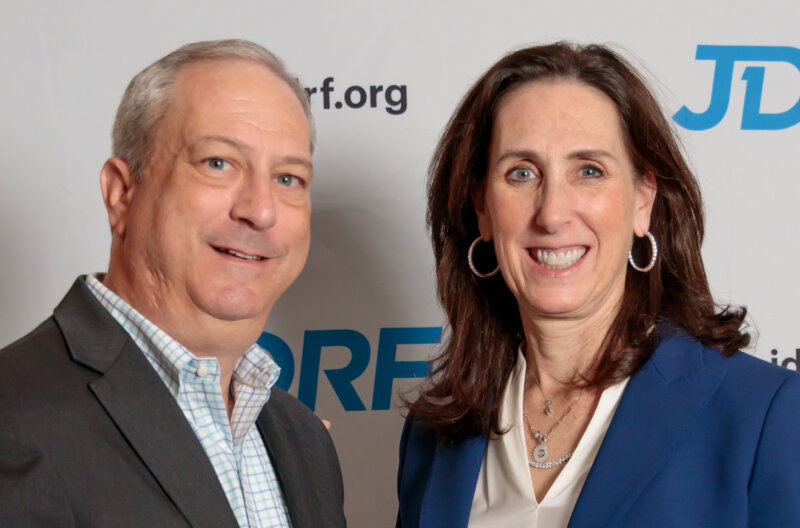
Lisa and her brother Scott, who has lived with T1D for over 50 years
Breakthrough T1D’s strategic leadership has led to the many advances that have made it safer and easier to live with T1D. When my brother was diagnosed in 1969, there was only urine testing and syringes and no blood sugar testing or insulin pump technology. Today, we have CGMs and closed-loop insulin delivery systems that have reduced the burden of living with T1D for Scott and Harris, as well as for Neil and me as caregivers.
I look forward to the day that Scott, Harris, and everyone with T1D will not need to depend on technology to live. I feel that day is getting ever closer as we drive the development of new disease-modifying and cell therapies that will enable us to prevent and cure T1D.
Lisa Fishbone Wallack, an attorney by training and long-time volunteer leader in the greater New England area, will serve as Breakthrough T1D International Board of Directors (IBOD) Chair, succeeding current Chair Grant Beard. Matt Varey, a senior executive at Royal Bank of Canada (RBC) and dedicated volunteer leader in the greater Toronto, Canada, area, will serve as Breakthrough T1D IBOD Vice Chair, succeeding current Vice Chair Michelle Griffin.
Lisa’s and Matt’s terms as Chair and Vice Chair, respectively, begin Monday, July 1, 2024.
Lisa Fishbone Wallack Continues Family’s Legacy of Championing Breakthrough T1D’s Mission
Lisa is a long-time volunteer leader of Breakthrough T1D’s Greater New England Chapter, first getting involved with Breakthrough T1D when her parents Marilyn and Dr. Gerald Fishbone were among the founders of Breakthrough T1D (then known as “JDF”) after her brother Scott was diagnosed with T1D in 1969 at the age of 18 months, and then increasing her involvement after her son Harris was diagnosed in 2001 at the age of 5.
Locally, Lisa has served as President of the Greater New England Chapter Board and remains active with the chapter. Nationally, she has been a member of the IBOD for nine years and has served as Vice Chair of the IBOD, as Chair of the Talent and Compensation Committee, and as Chair of the Nominating and Governance Committee.
Lisa is an attorney by training and is a volunteer leader at numerous other community organizations, leading annual, capital, and comprehensive campaigns and strategic committees.
Lisa and her husband Neil are proud to be leadership donors to Breakthrough T1D as well as donors to Breakthrough T1D’s T1D Fund. She and her family participate in all Breakthrough T1D programs, including the Walk and Gala, and she supports Neil’s participation in endurance events including the Boston Marathon, the Breakthrough T1D Ride program, and Ironman Triathlons, which collectively have raised more than $1.4 million for Breakthrough T1D.
For their outstanding and continued support of Breakthrough T1D, Lisa and Neil will be honored at the Greater New England Chapter’s Gala on Saturday, April 6.
Lisa graduated with a B.A. in The Biological Basis of Behavior from the University of Pennsylvania and with a J.D., summa cum laude, from the Benjamin N. Cardozo School of Law. In addition to their son Harris, Lisa and Neil have a son Perry and a daughter Sydney. They live in Weston, Massachusetts.
Matt Varey Leads and Engages Breakthrough T1D’s T1D Community
Matt Varey is currently a senior executive at Royal Bank of Canada (RBC)—the largest financial institution in Canada and one of the largest and most trusted in the world.
As Senior Vice President, Matt is responsible for national leadership of more than 4,500 Canada-based employees entrusted with important client life events including personal investments, mortgage financing and group benefits, totaling more than $100 billion of human trust annually. Prior to joining RBC in 1987 and taking on a wide range of senior management and executive positions within RBC, Matt was Vice President and General Manager of RBC Suisse, RBC’s Global Private Banking operations in Geneva, Switzerland.
Matt is an ardent supporter of Breakthrough T1D’s commitment to improving the lives of every person living with T1D and driving breakthroughs to cure the condition. His association and commitment to Breakthrough T1D started in 2001 and he currently serves on the Breakthrough T1D International Board of Directors and Breakthrough T1D Canada Board of Directors. His diverse international leadership experience will be instrumental in continuing Breakthrough T1D’s purposeful global mission and navigating the organization’s path forward in partnership with his Breakthrough T1D Board of Directors colleagues.
His previous Board responsibilities included Chair of the Board of Breakthrough T1D Canada and Board member of the Mutual Fund Dealers Association of Canada.
Matt graduated from McMaster University and currently resides in Oakville, Ontario, Canada, with his wife, Dr. Andrea Jack.
An Era of Unprecedented Breakthroughs
This new leadership coincides with an era of unprecedented T1D breakthroughs championed by Breakthrough T1D.
“We are in a golden age of advanced medicine and continue to see incredible progress in T1D cures research—in both disease-modifying therapies and cell therapies,” said Aaron J. Kowalski, Ph.D., Breakthrough T1D Chief Executive Officer. “As the leaders of our International Board of Directors, Lisa and Matt will ensure we will continue to drive cures and other life-changing breakthroughs forward through scientific advancements and advocacy.”
“We thank Grant and Michelle, who amplified our global efforts to improve lives and accelerate cures. There has never been a more exciting time for our mission as cures are now a matter of when, not a matter of if,” Kowalski said. “The potential for transformation is nothing short of electrifying and we look forward to the progress to come during Lisa’s and Matt’s tenure.”
About the Breakthrough T1D International Board of Directors (IBOD)
IBOD is the governing body for Breakthrough T1D and is tasked with accelerating the organization’s mission progress toward life-changing breakthroughs to cure, prevent, and treat T1D and its complications. Learn more about Breakthrough T1D’s volunteer and staff leadership.
Cynthia Rice, Breakthrough T1D’s Chief Mission Strategy Officer, will leave behind quite a legacy once she steps down from her role at Breakthrough T1D at the end of March 2023.
“In her time with Breakthrough T1D, she has led with strategic purpose and passion,” read Breakthrough T1D CEO Aaron Kowalski’s December 2022 memo announcing Cynthia’s decision to leave. “She has been an incredibly valuable partner to me, as well as staff and volunteers throughout the organization.”
During her tenure at Breakthrough T1D, she has helped bring the artificial pancreas project to life, has driven efforts to renew the Special Diabetes Program, and was a key player in Breakthrough T1D’s response to and handling of COVID-19—all with the partnership of our strategic staff and vast network of volunteers, who are the bedrock of our advocacy efforts.
“It’s possible—while challenging—to impact the research and development (R&D) ecosystem to improve options and outcomes for people living with chronic diseases like type 1 diabetes,” says Cynthia. “Defining goals, tapping into strengths, building capacities, and remaining determined in the face of obstacles are critical.”
And for nearly two decades, she has done just that at Breakthrough T1D.
“Leverage—enlisting others to our cause—is critical to our success and core to our organizational DNA, whether it’s engaging friends and families, company R&D heads, government officials, or foundation leaders,” Cynthia says.
The Artificial Pancreas Endeavor
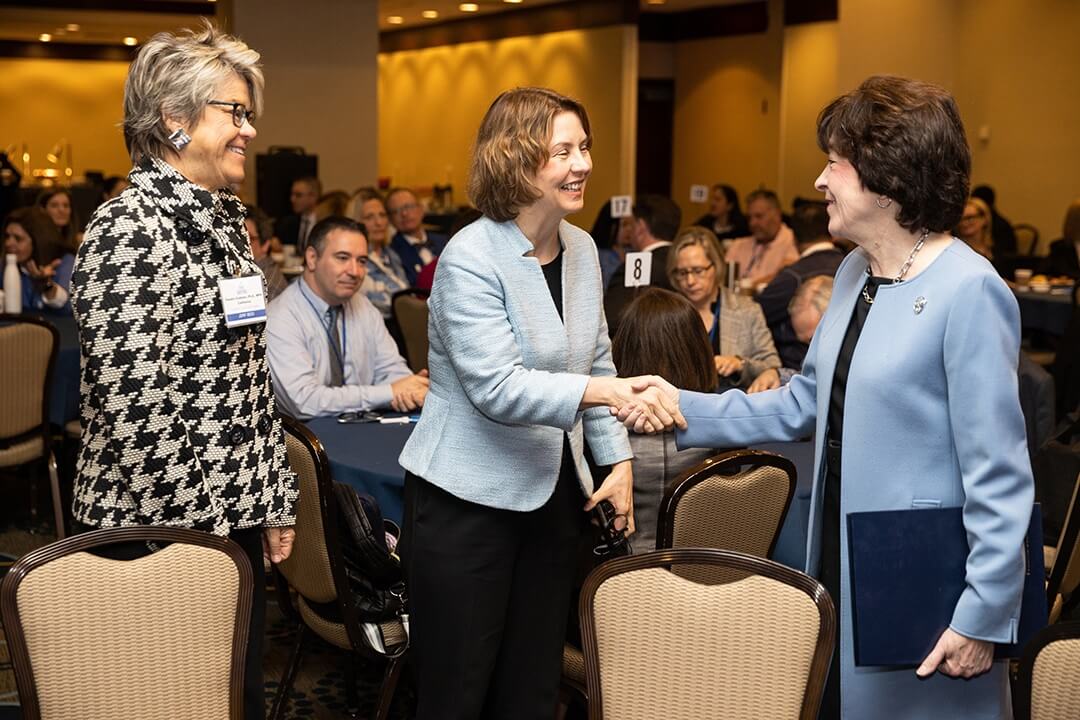
From Left: Breakthrough T1D International Board of Directors member Claudia Graham, Ph.D., M.P.H.; Breakthrough T1D Chief Mission Strategy Officer Cynthia Rice; and Senator Susan Collins (R-ME). Left-click on image to slightly enlarge.
Cynthia came to Breakthrough T1D in September 2005. Real-time continuous glucose monitors (CGMs) were in the early stages of development, with one approved just months prior.
Aaron Kowalski, Ph.D., who had come to Breakthrough T1D a year before and is now the CEO, and Jeffrey Brewer, a member of Breakthrough T1D’s International Board of Directors at the time, had just spent six months interviewing academic scientists, corporate executives, and other like-minded players to figure out whether Breakthrough T1D wanted to take on the development of an artificial pancreas. There were many barriers, and companies were very wary of getting involved.
In the interviews, it became clear that despite the hesitation among companies, there was significant potential benefit for the T1D community in pursuing artificial pancreas technologies. The leadership—needed to foster a therapy roadmap, research funding, regulatory pathway, and health care access—just wasn’t there.
Breakthrough T1D changed that. We made it a priority, bringing not only our research funding, but also our powerful advocacy forces, to speed the development of these devices.
“The goal of multiple artificial pancreas systems, with ongoing innovation, drove our strategy,” says Cynthia, “and we took actions early on with that goal in mind, utilizing our strengths, building new capacities and relationships, and battling doggedly to overcome obstacles.”
Overcoming the Obstacles
Among the first obstacles was that the benefits of continuous glucose monitoring in the management of T1D had only been shown in small studies. In 2008, a Breakthrough T1D multi-site randomized control clinical trial showed that people with T1D who used the devices experienced significant improvement in blood-sugar control. This was instrumental to CGM coverage and laying the groundwork for the artificial pancreas system to come to fruition and be covered by the healthcare system.
Another obstacle was linking together the two main components of a closed-loop artificial pancreas system—the glucose sensor and an insulin pump. Breakthrough T1D established the Artificial Pancreas Consortium, which connected researchers from several different laboratories to develop the computer algorithms so that the machines could “talk” to each other and then be commercialized, as necessary.
A third obstacle—perhaps the most challenging of them all—required engaging government, regulatory, and health care groups.
Breakthrough T1D worked with researchers, insurance companies, the National Institutes of Health (NIH), the U.S. Food and Drug Administration (FDA), Medicare, and Congress on regulatory and coverage issues. When the first artificial pancreas system came on the market in 2016, the T1D community was more than ready for the life-changing T1D management it offered.
“Seeing the artificial pancreas go from concept to reality, which is helping so many people keep their blood-sugar management in control, is what makes Breakthrough T1D and all of the advocacy volunteers—who sent an email, made a call, signed an action alert, or met with their Member of Congress—very proud of this historic achievement and the impact that these will have on the individual lives of those with type 1 diabetes,” Cynthia adds.
The Special Diabetes Program (SDP)
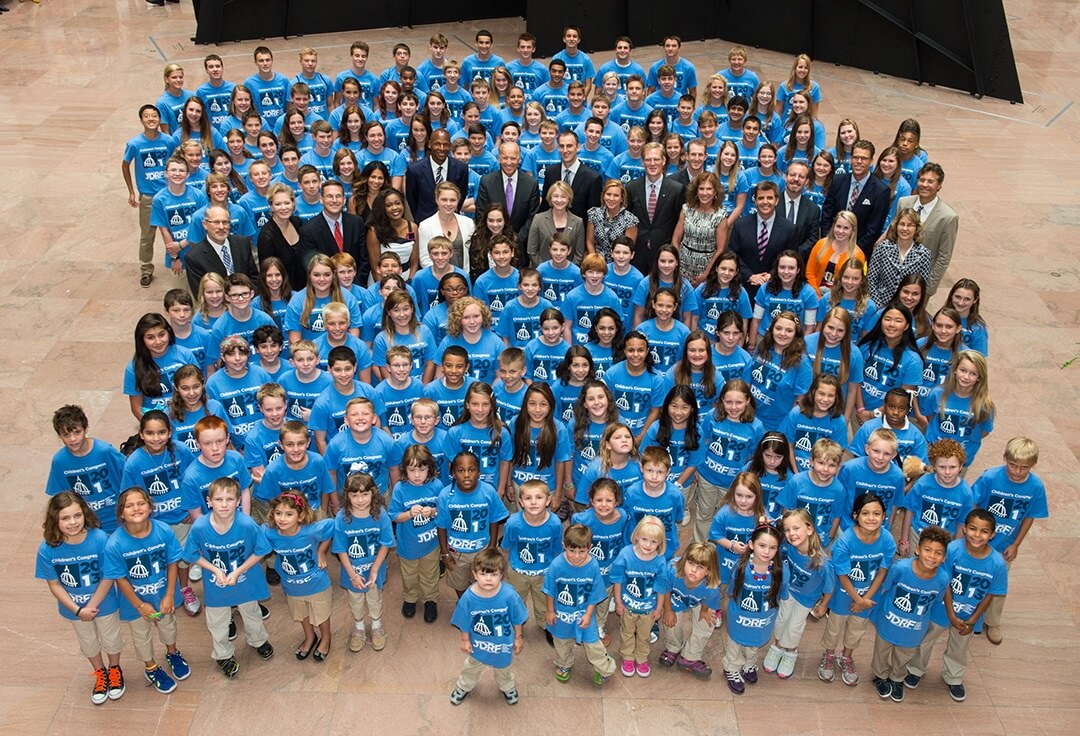
Cynthia Rice (far right, fifth row from the back), Breakthrough T1D volunteers, and Delegates at Children’s Congress 2013 with then-Vice President of the United States Joseph R. Biden (center). Left-click on image to slightly enlarge.
In 1997, with the bipartisan leadership of White House Chief of Staff Erskine Bowles and Speaker Newt Gingrich, Congress created the Special Diabetes Program (SDP), which annually allocates $150 million for T1D research at the NIH. Breakthrough T1D is the chief advocate of the SDP.
The SDP has been instrumental to some of the greatest advancements in the history of T1D—including research that led to artificial pancreas systems and the recent FDA approval of the first-ever drug that can delay onset of T1D, Tzield™ (teplizumab-mzwv).
Since its inception, the SDP has invested $3.4 billion into T1D research. The program’s success and continued renewal is the result in part of hundreds of Breakthrough T1D advocates meeting with their Members of Congress each year to discuss the importance of the SDP.
“Sustaining bipartisan support to renew again and again in challenging times in Washington is thanks to the amazing volunteer-staff partnership in advocacy,” says Cynthia. “This is now paying enormous dividends, not only in the artificial pancreas systems, but in cures therapies, including disease-modifying and cell therapy treatments.”
Breakthrough T1D’s Unique Strengths
“Breakthrough T1D has two strengths that are rare,” says Cynthia. “The first is scientific expertise, convening the best and brightest across fields and generating ideas to solve the biggest problems. The second is community passion, to influence R&D priorities, regulatory pathways, and health care access and enlist government leaders to take action for our cause.”
She adds: “Breakthrough T1D has harnessed these strengths and organized the community, leading to our higher-level power: Influence.”
“It’s not only possible but realizable for a small band of determined people, starting with our founding moms, to tackle and overcome big obstacles,” says Cynthia. “As long as we organize ourselves well, deploy smart strategies, and develop an advocacy message that people can get around, Breakthrough T1D will continue to have the impact that has historically been the pillar of our advocacy work.”
“More broadly, strong patient advocacy strengthens our health system and our society and helps align incentives in research, development, and health policy to benefit the people affected by the disease,” says Cynthia. “All of us as leaders should be thinking about what else we can do to help strong, independent patient communities come together and thrive as advocates, which I hope to do when I return to the health sector in 2024 after a sabbatical.”
A Legacy of Women Leaders
Breakthrough T1D was founded by women, has mostly women staff and volunteers, and counts numerous successful and influential women among its current and past leaders and supporters.
Women who, like Cynthia Rice, share Breakthrough T1D’s vision for a world without T1D and who will stop at nothing to turn that vision into reality.
“From the majority staff and volunteer base, to our women founders, to our international chair Mary Tyler Moore, to our advocates, fundraisers, and scientists,” says Cynthia, “Breakthrough T1D, as an organization, shows the power women can have to impact their world.”
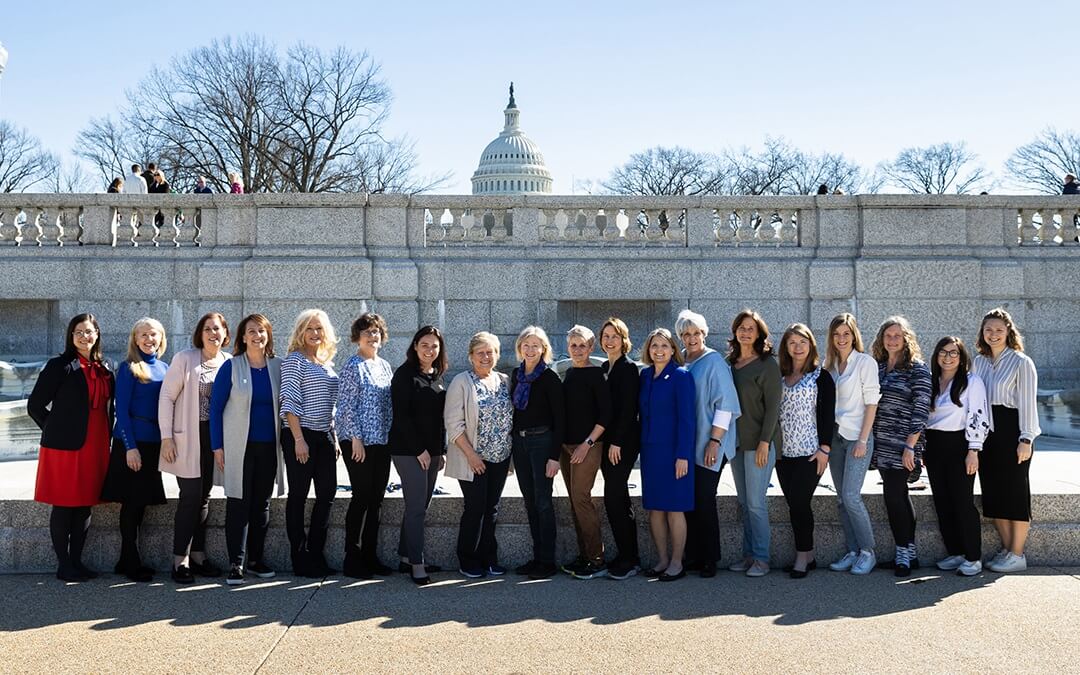
Members of Breakthrough T1D’s Grassroots Leadership Team (GLT) along with members of Breakthrough T1D’s Advocacy Team, including Cynthia Rice (ninth person in from the right) at Breakthrough T1D Government Day 2023. Left-click on image to slightly enlarge.
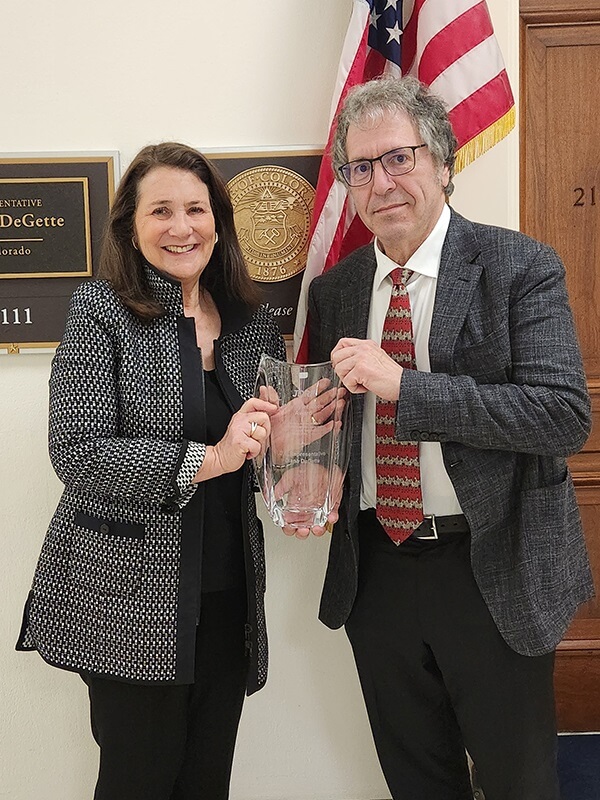 Mary Tyler Moore would have been proud to have an award recognizing women who have made pioneering contributions to the fight against type 1 diabetes (T1D). Now, such an award exists!
Mary Tyler Moore would have been proud to have an award recognizing women who have made pioneering contributions to the fight against type 1 diabetes (T1D). Now, such an award exists!
Presented by Breakthrough T1D, the new award honors the legacy of trailblazer and cultural icon Mary Tyler Moore, who was diagnosed with T1D at the age of 33. As international chairman of Breakthrough T1D from 1984 to 2017, Moore used her influence to bring government, scientists, and people living with diabetes together to further T1D advocacy and innovation.
The award highlights the leadership of women who, like Mary, question the status quo, bravely take risks, and drive changes to improve the lives of those living with T1D.
The inaugural award goes to some of the most powerful women in the United States government who are fighting T1D: Senator Susan Collins (R-ME), Senator Jeanne Shaheen (D-NH), and Representative Diana DeGette (D-CO). Each has provided exemplary leadership, demonstrated the strongest allyship to the T1D community, and has championed and passed legislation that will improve the lives of those living with T1D. These include the Special Diabetes Program (SDP)—which funds $150 million to diabetes research per year—and insulin affordability, including a cap on the price of insulin at $35 per month for Medicare enrollees.
“When most of the world thinks of Mary, they immediately picture Laurie Petrie from ‘The Dick Van Dyke Show’ or Mary Richards from the ‘Mary Tyler Moore Show’ — or many of the numerous other roles she played,” said S. Robert Levine, M.D., her husband of more than 30 years and longtime leading Breakthrough T1D volunteer. “But the biggest role she took on was her profoundly effective advocacy for support for federal funding of research to find cures for T1D and its complications, and her commitment to the T1D community.”
“I am truly touched that the inaugural award in her name celebrates three government leaders—Susan Collins, Jeanne Shaheen, and Diana DeGette—who partnered with Mary to assure more federal funding of T1D research, including the funding of critical research resources, consortia, and clinical trial networks to bring us closer to cures,” Dr. Levine added.
One of Moore’s most significant achievements as Breakthrough T1D international chairman was increased Congressional funding for the Special Diabetes Program (SDP) at the National Institutes of Health that has accelerated the pace of T1D research. This long-term investment in diabetes research has helped lead to significant scientific breakthroughs, including Tzield™ (teplizumab-mzwv), the first disease-modifying treatment for T1D which can delay the onset of the disease by more than two years.
“Thanks to the enduring efforts of Mary Tyler Moore, we are bringing new treatments forward and moving closer every day to cures for type 1 diabetes and its complications,” said Cynthia Rice, Breakthrough T1D’s chief mission strategy officer. “Senators Collins and Shaheen and Representative DeGette have been steadfast allies in Congress to the T1D community. Breakthrough T1D is proud to recognize their work as they carry Mary Tyler Moore’s legacy forward.”
As reported in Harvard Business Review, “Research has shown that firms with more women in senior positions are more profitable, more socially responsible, and provide safer, higher-quality customer experiences—among many other benefits.”
It should be no surprise then that Breakthrough T1D, the leading global nonprofit funding type 1 diabetes (T1D) research, has promoted two more women on its executive leadership team: Kathleen Seitz and Sydney Yovic.
Breakthrough T1D has ambitious but strategic goals to further amplify its role as a global leader in the T1D space. Promoting both high performing, innovative-thinking women to more senior leadership roles maps directly to those goals.
Kathleen Seitz
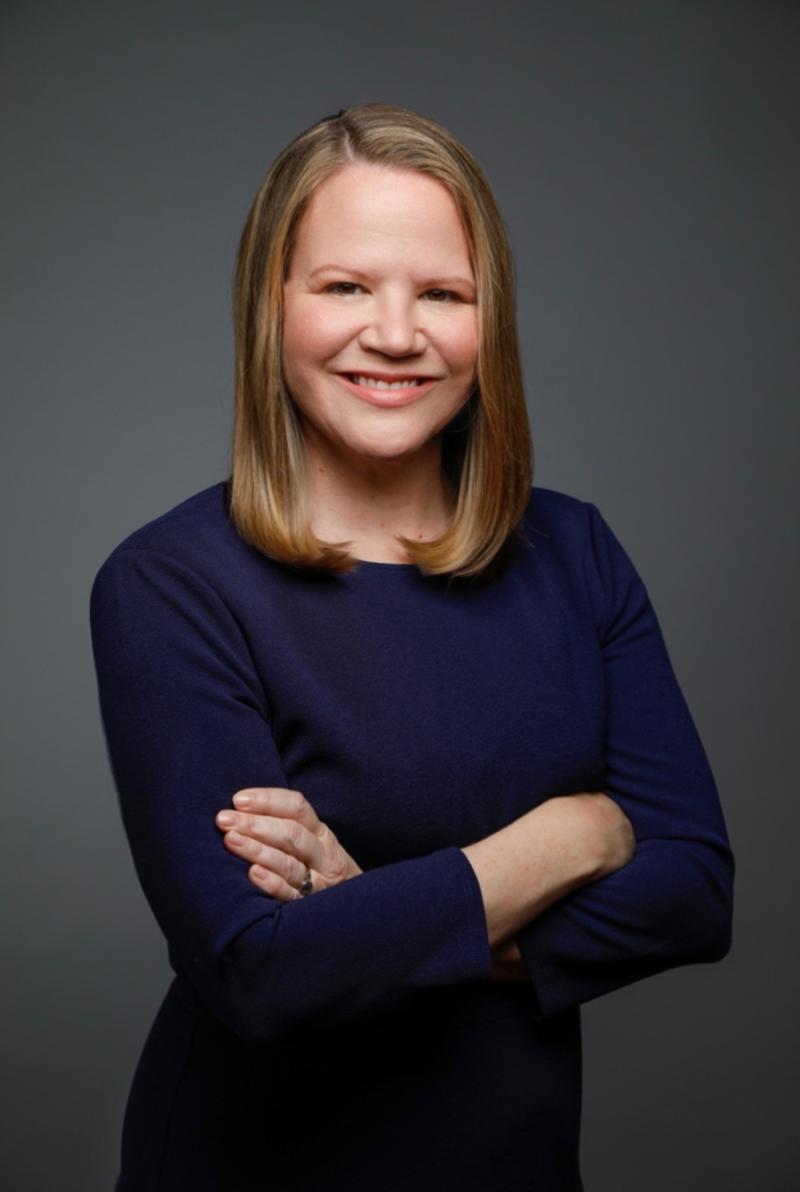 Breakthrough T1D is pleased to announce that Kathleen Seitz, Senior Vice President, Global Development, has been promoted to Chief Global Development Officer overseeing the field network, volunteer engagement and all contributed revenue sources.
Breakthrough T1D is pleased to announce that Kathleen Seitz, Senior Vice President, Global Development, has been promoted to Chief Global Development Officer overseeing the field network, volunteer engagement and all contributed revenue sources.
With more than 25 years of development experience, Kathleen has worked with a cross-section of nonprofits, including cultural, healthcare, human service, secondary and higher education, and religious organizations. She has significant expertise in volunteer management, fundraising staff recruitment and training, and strategic fundraising planning. Kathleen also received her Certified Fundraising Executive (CFRE) designation in 2019.
In her short time with Breakthrough T1D, Kathleen has already made an immediate impact, growing and guiding her team so they are well-positioned to maximize our revenue and build a global development strategy to increase Breakthrough T1D’s global footprint and presence.
As Chief Global Development Officer, Kathleen will lead Breakthrough T1D’s efforts to maximize initiatives and raise more funds to advance our mission in the United States and globally. We look forward to the positive impact Kathleen will continue to have on Breakthrough T1D and the T1D community as she drives continual improvement of fundraising strategies and engagement in Breakthrough T1D programs.
Sydney Yovic
Breakthrough T1D is pleased to announce that Sydney Yovic, Chief of Staff, has been promoted to the position of Chief Strategy Officer and Chief of Staff.
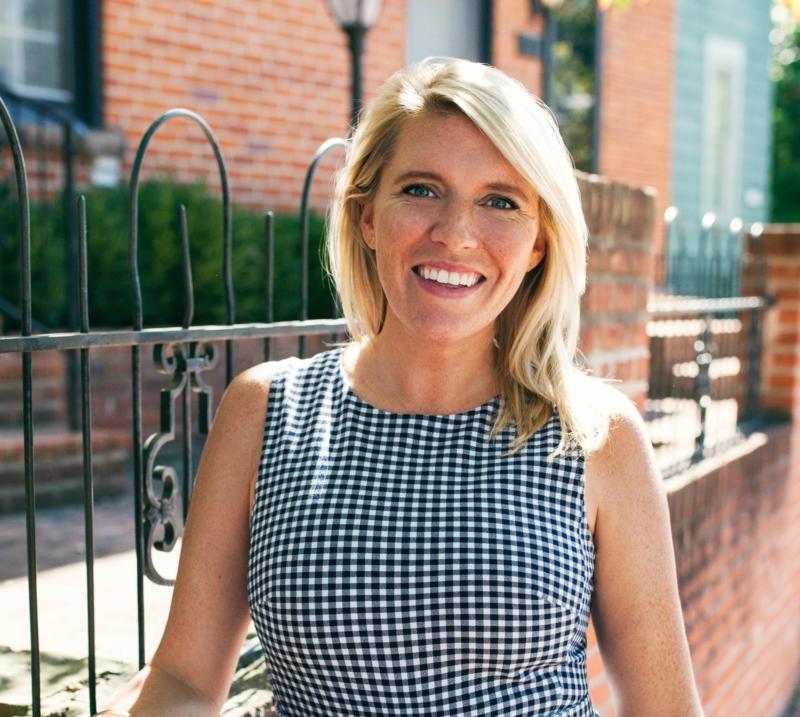 Sydney has been a valuable, results-driven leader for Breakthrough T1D for over 10 years, having started as Project Manager in the Research department and taken on roles of increasing responsibility since then. She continues to be an incredibly valuable partner to staff and volunteers throughout the organization.
Sydney has been a valuable, results-driven leader for Breakthrough T1D for over 10 years, having started as Project Manager in the Research department and taken on roles of increasing responsibility since then. She continues to be an incredibly valuable partner to staff and volunteers throughout the organization.
In her newly expanded role, Sydney will lead and drive Breakthrough T1D’s strategy and organizational priorities to help shape our future vision and propel our mission forward. Sydney will continue to be a tremendous asset as she develops strategic plans, implements impact measures, and centralizes resources to ensure Breakthrough T1D is operating at the highest levels of effectiveness and efficiency.
Breakthrough T1D and the T1D community will continue to benefit from Sydney’s strong leadership skills as she works to ensure Breakthrough T1D’s organizational strategies, processes, tools, systems and offerings are well-positioned to drive continual improvement, growth, and impact.
The Association of Diabetes Care & Education Specialists (ADCES) goal is to improve diabetes outcomes through innovative education, management, and support, and it has over 12,000 members. Each year, they give out a number of awards. These are a big deal. And, this year, the 2023 Diabetes Care and Education Specialist of the Year Award is going to <drumroll please> Anastasia Albanese-O’Neill, Ph.D., APRN, CDCES, Breakthrough T1D’s director of community screening and clinical trials education!
The award recognizes a diabetes specialist who has made a special contribution through dedication and innovation in the daily practice of patient care. And, oh, has Anastasia made a profound contribution! Let’s take a look:
- She has been actively involved in diabetes care, education, advocacy, and research—including being a Breakthrough T1D volunteer for the past two decades—since 2002, when her daughter was diagnosed with type 1 diabetes
- Anastasia is a licensed and board-certified pediatric nurse practitioner, certified diabetes care and education specialist, and certified to train people with diabetes on how to use insulin pumps, continuous glucose monitors (CGMs), and automated insulin delivery systems (also known as artificial pancreas systems)
- She has been an avid diabetes advocate since 2002 and has spoken at congressional hearings, the White House, and in the Florida legislature
- She served as co-chair for the American Diabetes Association’s Safe at School Working Group, and was a co-author for guidelines related to diabetes management in the school setting
- Anastasia recently founded a Florida-based nonprofit, Diabetes Toolkit, designed to support the diabetes education provided in clinic
And I could go on and on…but I won’t. (But she’s got a resumé that would make anyone’s head swirl!)
The award was given to her at the ADCES Annual Conference on August 12-15, 2022. The award also provides a cash prize and a commemorative plaque.
Please applaud Anastasia on her congratulatory and well-deserved honor!
Jennifer Bennett, managing director and associate general counsel in the Office of the Corporate Secretary for Bank of America Corporation in Charlotte, North Carolina, has been appointed Chair of the Breakthrough T1D Global Mission Board (GMB), effective July 1, 2022.
The Breakthrough T1D GMB also welcomes new members Meredith Coors (Mountain West Chapter), Laura Cramer (Mid-Atlantic Chapter), Maarten de Groot (Breakthrough T1D Netherlands), Gwen Malone (Pacific Northwest Chapter) and David Schwab (Mid-Atlantic Chapter), to help drive mission progress through volunteer engagement.
The Breakthrough T1D GMB, created in 2019, is a group of volunteer leaders who collaborate with staff leaders to advance Breakthrough T1D’s mission through special initiatives in research, advocacy, fundraising, and community engagement. Jennifer will be the second-ever Chair of the GMB, following Kim Roosevelt, who served in the role for the last three years.
Vanguard Volunteer
Jennifer became part of Breakthrough T1D 17 years ago when her child, Rain, was diagnosed with type 1 diabetes (T1D) at the age of three. Her family has participated in the Breakthrough T1D One Walk every year since Rain’s diagnosis.
Jennifer’s dedication to Breakthrough T1D is unmistakable. Jennifer has volunteered in many roles in Breakthrough T1D’s North Carolina Chapter, including as Chapter Board President and Executive Council Chair. At the national level, she previously served on the International Board of Directors (IBOD) and is currently on the IBOD’s Nominating and Governance Committee and the Talent and Compensation Committee. She has been a member of the GMB’s leadership since 2019, heading the fundraising and engagement pillar.
“Our Global Mission Board plays a critical role in Breakthrough T1D’s Mission and in recruiting and engaging volunteers,” said Aaron J. Kowalski, Ph.D., Breakthrough T1D Chief Executive Officer. “I’m confident that our GMB, together with Jennifer and its newest board members, will harness the passion of our volunteers to accelerate our mission progress and move us even closer to a world without type 1 diabetes.”
Steve Davis was a leader in the restaurant and consumer packaged goods industries, but to Breakthrough T1D, he was a beloved member of the Breakthrough T1D family and our International Board of Directors. It is with incredible sadness and heavy hearts that we share that Steve passed away of sudden cardiac arrest on July 10, 2022.
We are forever grateful for Steve’s many years of service to Breakthrough T1D, as well as the time, talent, and support he generously dedicated to changing the world for people living with type 1 diabetes. Steve and his wife, Lynnda, got involved with Breakthrough T1D’s Central Ohio chapter when their daughter was diagnosed with T1D in 2009. Since then, they worked tirelessly to accelerate Breakthrough T1D’s mission, fund critical research, and drive life-changing breakthroughs to cure, prevent, and treat T1D.
Steve served as CEO of Bob Evans from 2006 – 2015 and during that time, he and Lynnda were instrumental in promoting and partnering with Breakthrough T1D through store campaigns, community fundraisers, and Walk Sponsorships. In addition, Steve’s legacy of impactful contributions includes:
- Steve and Lynnda have both served on the Central Ohio Breakthrough T1D Board of Directors.
- Steve served as Corporate Recruitment Chair for the 2013 and 2014 Walk to Cure Diabetes (OneWalk)
- In support of the 2014 Walk to Cure Diabetes, Steve held a National Sneaker Sale through Bob Evans that raised over $103,000 for Breakthrough T1D nationwide.
- In 2015, Steve and Lynnda were Gala Honorees and received the Breakthrough T1D Buckeye Promise Award for their dedication to Breakthrough T1D and the community.
Steve served on Breakthrough T1D’s International Board of Directors since 2017, was a member of the Funding Committee, and most recently served as the Nominating and Governance Committee Chair for the last three years.
Steve was a true T1D champion and changemaker. The impact of his philanthropic efforts will benefit the T1D community for years to come and we are grateful for the role he played in bringing us closer to curing T1D than we’ve ever been.
Please keep Lynnda, their three daughters Brittany, Stephanie and Cassie, and the entire Davis family in your thoughts and prayers during this incredibly difficult time.

